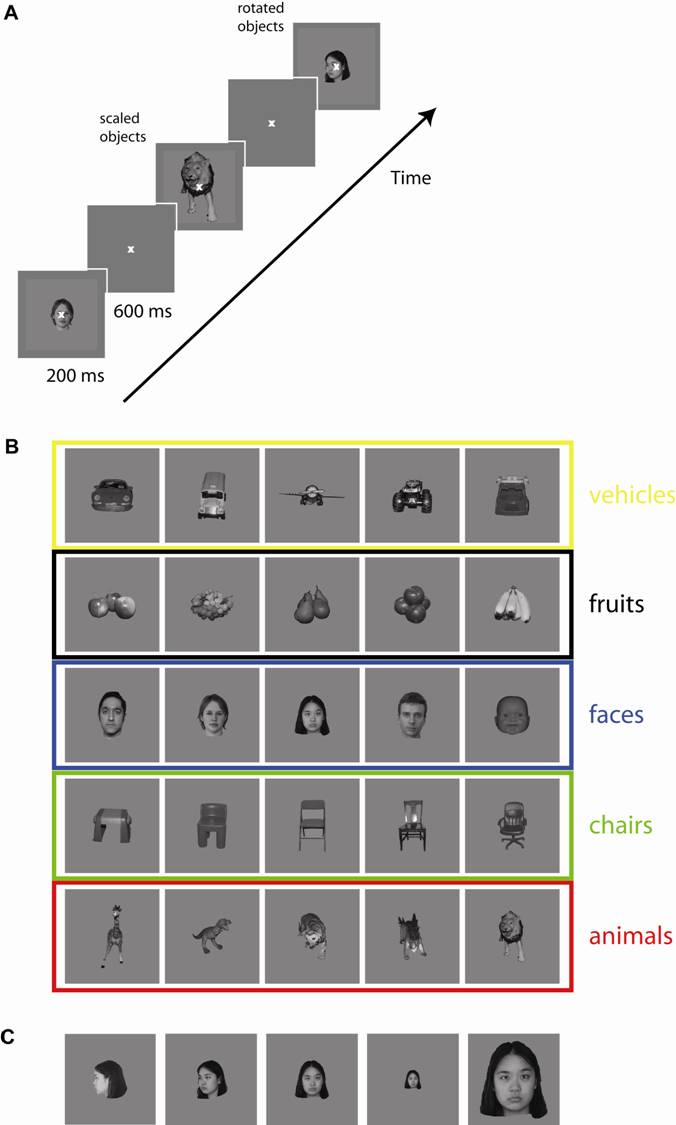


Figure S1: Stimulus presentation scheme
A. Grayscale images were presented for 200 ms,
with a 600 ms gray screen in between images. Subjects were instructed to fixate
and performed a one-back task indicating whether the same object was repeated
(regardless of changes in scale or viewpoint). Image order was
pseudo-randomized. B. Objects belonged to one of 5 possible categories. Here and
throughout the manuscript, each category is indicated by a separate color (red=animals, green=chairs, blue=faces, black=fruits, yellow=vehicles). There were 5 exemplar
objects per category. These images show the “default” viewpoint for each
exemplar. C. Each object was presented
in one of 5 possible transformations, illustrated here for only one object.
There were 3 depth rotations (0, ~45 and ~90 degrees) at the same scale and 3
scales (visual angles of 1.5 degrees, 3 degrees and 6 degrees) with the same
rotation for each object. The duration of each session depended on clinical
constraints and subject fatigue (min duration = 7 min., max duration = 40 min,
mean=19.6±7.9 mins). In many cases we were able to
record several sessions per subject (min=1, max=7, mean=2.6±1.6). Results were
very consistent across sessions; throughout the manuscript we merged the
responses across all sessions for each subject.
